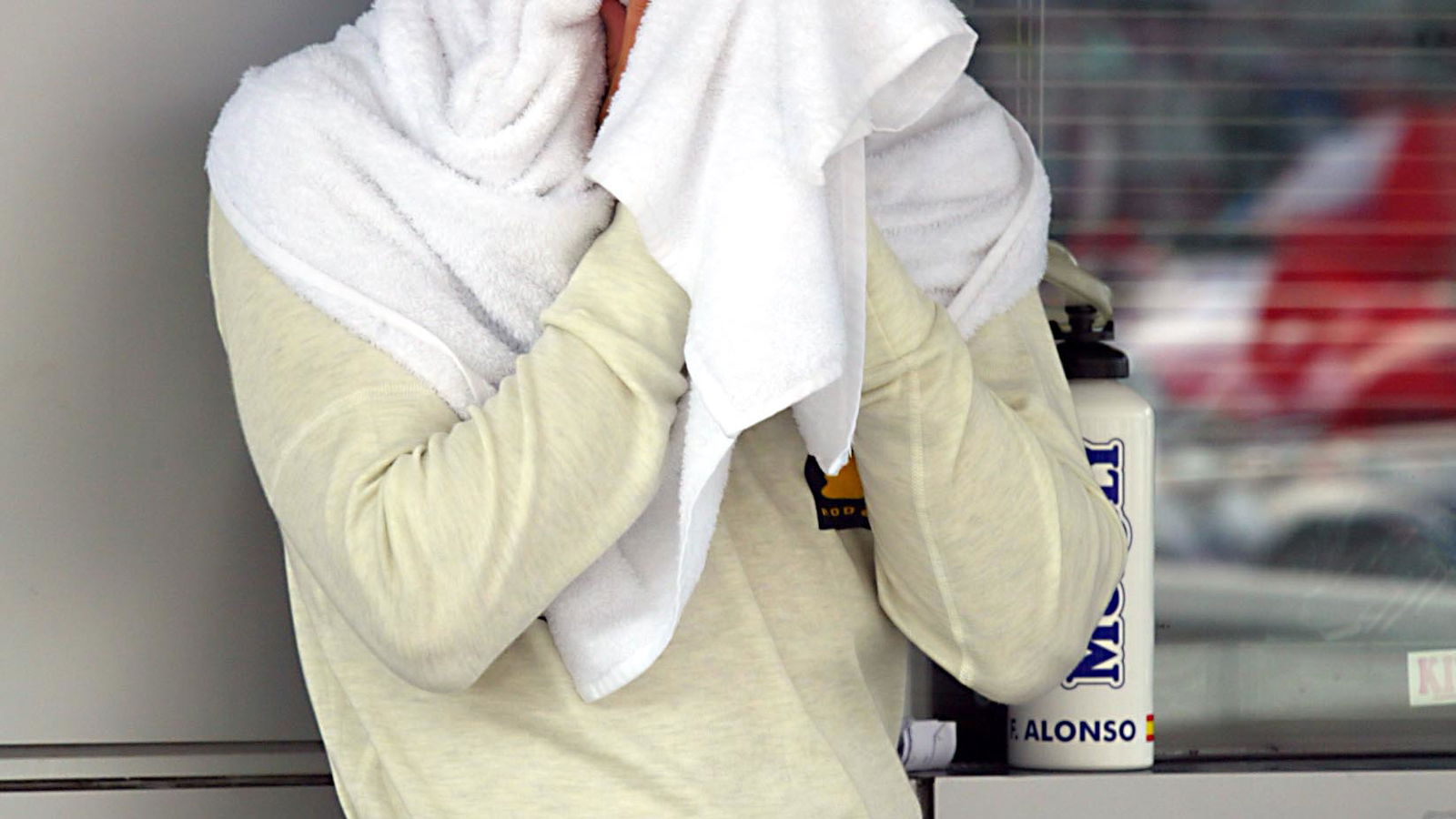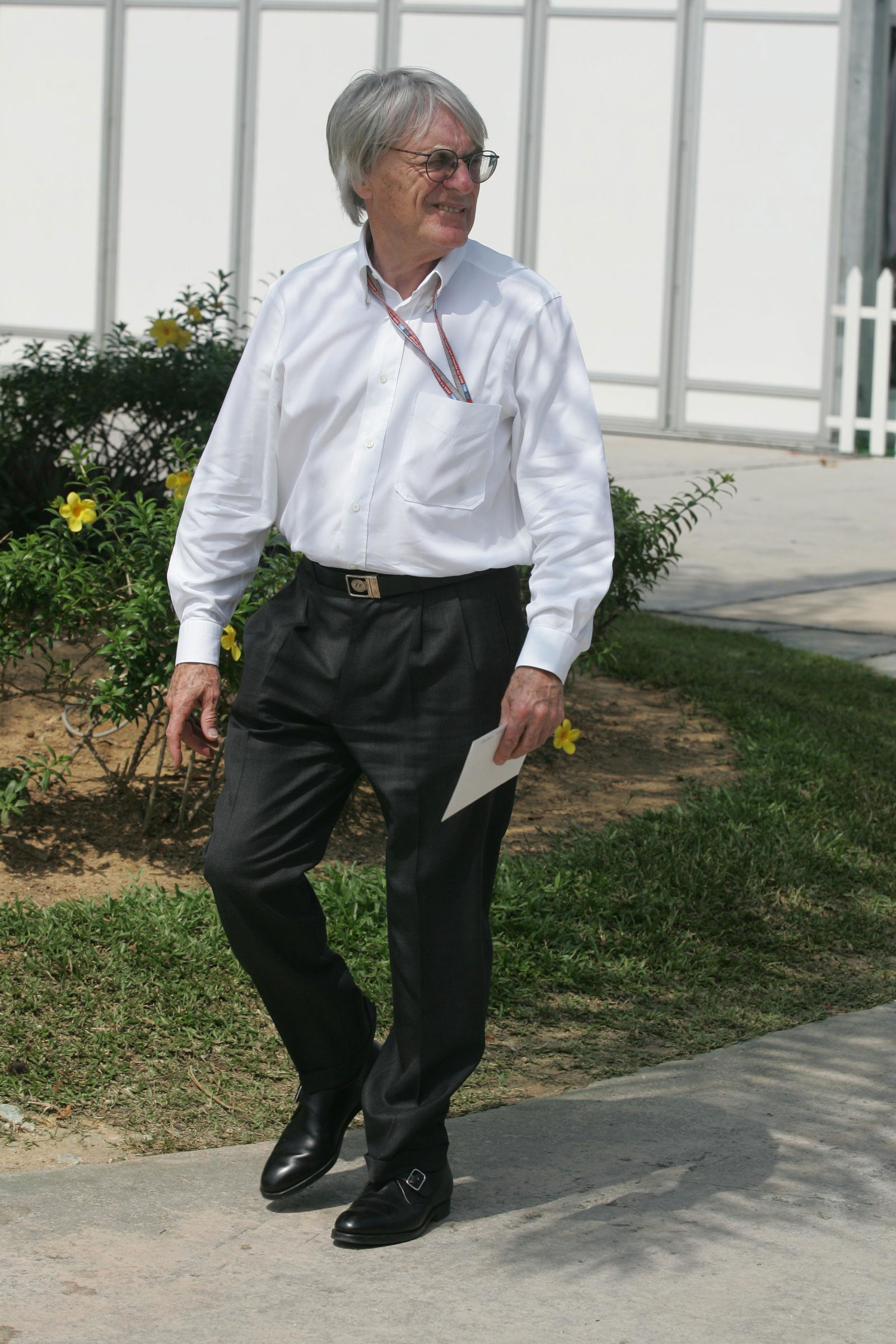The Bahrain challenge.
Fernando Alonso gave Renault their second win in as many races in Malaysia two weeks ago. Now he heads to Bahrain this weekend eager to do just as well and maintain his lead in the drivers' championship.
What will he need to do? Over to his chassis race engineer, Rod Nelson to explain the specific challenges of round three...

Fernando Alonso gave Renault their second win in as many races in Malaysia two weeks ago. Now he heads to Bahrain this weekend eager to do just as well and maintain his lead in the drivers' championship.
What will he need to do? Over to his chassis race engineer, Rod Nelson to explain the specific challenges of round three...
"Sakhir places extreme demands on a Formula One car's braking ability. In terms of brake wear, it is up with Montreal as the most demanding circuit of the year, and the drivers have to brake from 320 kph to first or second gear on three separate occasions," he stated.
"The brake usage itself is not a problem, but the twisting layout between Turns 4 and 13 means that the brakes never really have time to cool down properly, which can potentially lead to oxidisation and much higher wear rates if cooling levels are insufficient. We run our largest brake ducts of the year at this circuit, and the drivers will often have to adjust the brake bias during the race in order to manage brake wear.
"In general, circuit grip levels are fairly low, due to the limited usage of the track and, obviously, the presence of sand on the surface. Running in first practice is of little value, and the drivers stick to the racing line even during their out-laps in order to keep the tyres clean. Sand on the tyres will take a couple of laps to clean off, and on Friday, we must both keep the cars tyres in as good condition as possible to conduct representative evaluations, and use our lap allocation extremely efficiently - so keeping the tyres clean is even more important than last year. The sand also poses one other problem: when in traffic, the car is shotblasted by the sand particles thrown up by the car in front. The front wing main-plane is particularly exposed to damage, and this can affect the car's aerodynamic performance.
"For the tyres, wear is not a major problem: the lack of high speed corners means that the overall tyre energy is low - in contrast to Sepang. Rather, the numerous traction events, accelerating out of slow speed corners, mean that the rear tyres are likely to be the limiting factor.
"In terms of set-up, Fernando will be asking us for good braking stability from the car, to avoid locking the rear tyres into the slow corners and to maintain a good balance into turns 10 and 13, where he is simultaneously turning and braking. We also need ensure the car balance is neutral on the exit of the slow corners, to avoid oversteer which costs time and will damage the rear tyres. Finally, we need to find the balance between stability through the higher speed corners of turns 5/6/7 and softer springing in the slow turns, to give good mechanical grip. We achieve this by using bump rubbers to support the car at higher speeds, where aero loadings are greater, and the car then rises out of these in the low speed sections to make the springing much softer and maximise grip.
"Temperatures are, of course, expected to be high, but having survived the challenge of Sepang, cooling should not be a problem. Indeed, the humidity levels are much lower, which makes life easier for the drivers than at the last race. Track temperature also has an impact on handling, and we discovered last year that above 40?C the grip levels were much lower. According to how the weather forecasts pan out, this is something we may have to try and counter in our race set-up."
On the engine front meanwhile, Remi Taffin - Alonso's engine race engineer - will be looking to make sure his V10 goes the distance...
"The Bahraini Grand Prix is a stern test for an F1 engine," he added. "The engines spend 62 per cent of the lap at full throttle, which is among the five highest values of the season and places severe strain on the engine's moving parts. Equally, the two long straights means the engine spends a long time at high revs, putting additional pressure on the moving assemblies.
"The primary and most characteristic danger for the engine in Bahrain is the possible ingestion of sand. Any presence of sand in the pistons, piston rings or valves would be catastrophic, and this means we pay particular attention to the air filter, bringing several different specifications. While this penalises us slightly in pure performance, it is nevertheless a good compromise for the length of the weekend, and is particularly important in 2005 because the engine will be re-used at Imola, itself a demanding engine circuit.
"Contrary to conventional wisdom, the high temperatures are not inherently problematic for the engine. Our operating temperatures remain constant whatever the ambient conditions, so the determining factor is how efficiently we can cool the V10 - and what penalty we pay in aerodynamic performance for this. In Malaysia we saw that the R25 was particularly effective in its cooling.
"The other phenomenon particular to circuits where we encounter high temperatures is engine acoustic offset. As temperatures rise, the speed at which the engine develops peak power increases, rising by approximately 300 rpm for every 10?C increase in temperature, and this obliges us either to use more revs in hotter temperatures, which is not always an option depending on reliability considerations, or to modify the intake system, for example using longer trumpets. The RS25 has been designed, and is run, in such a way as to allow us to optimise its performance regardless of atmospheric conditions."

